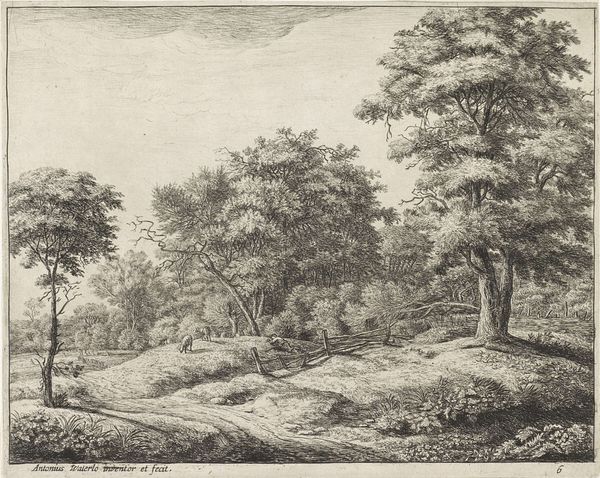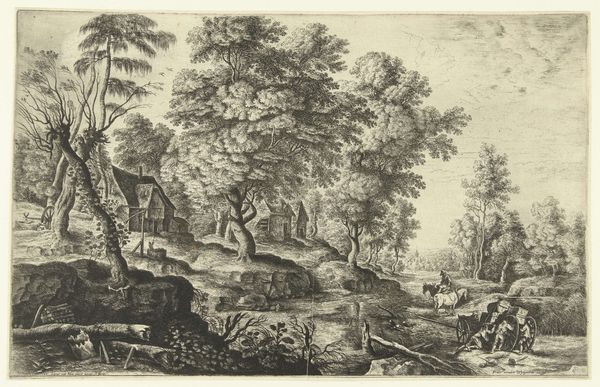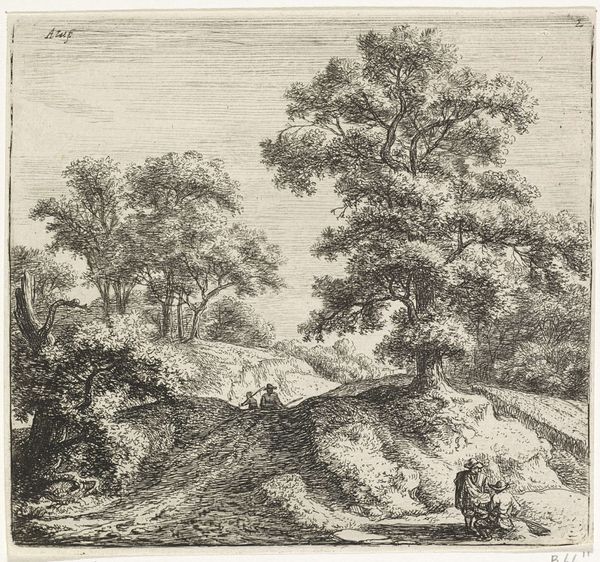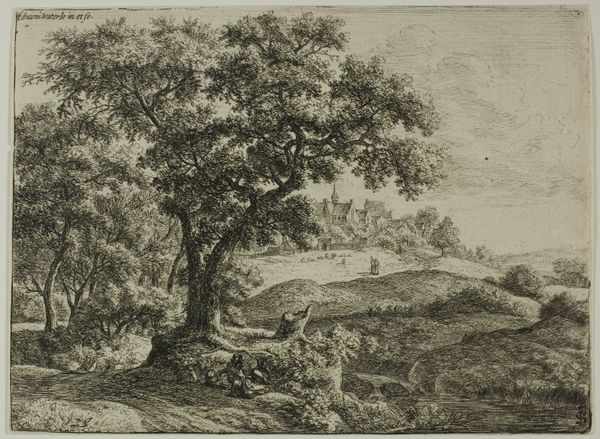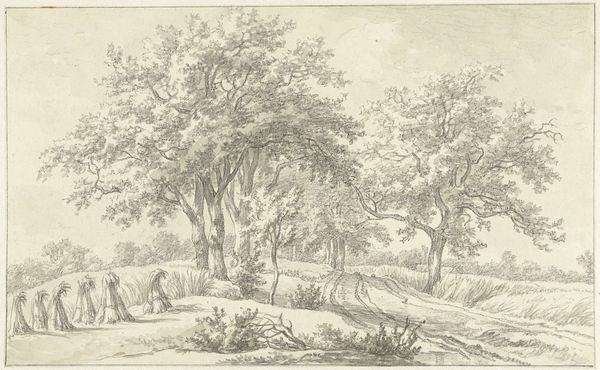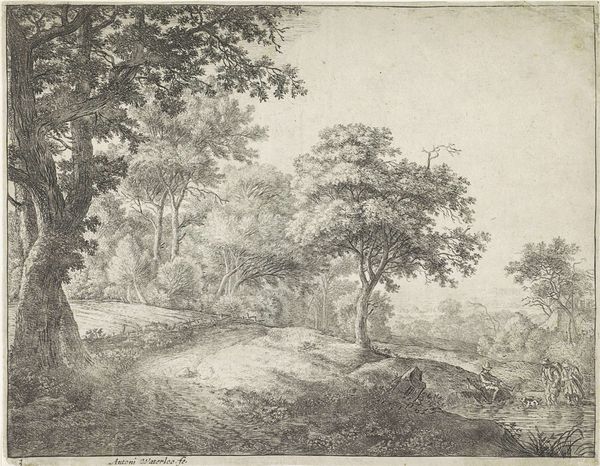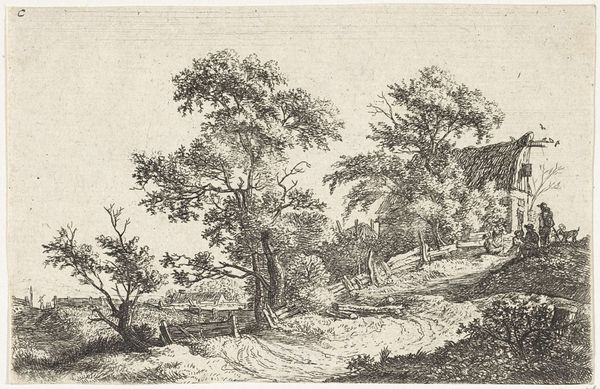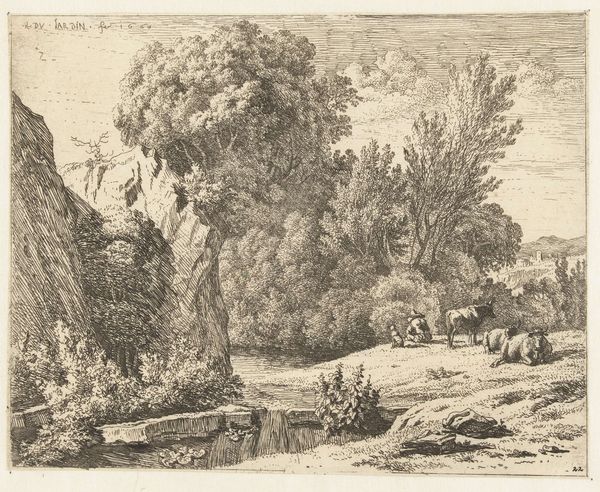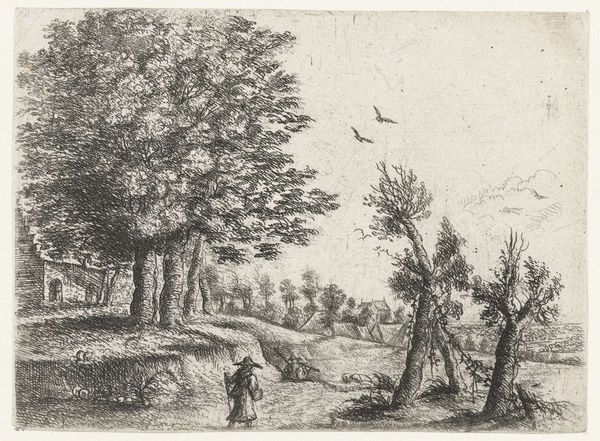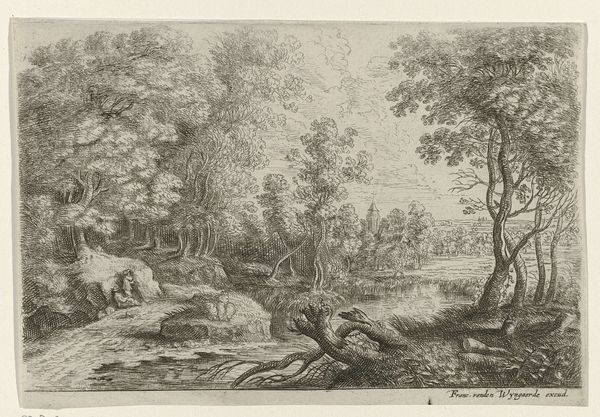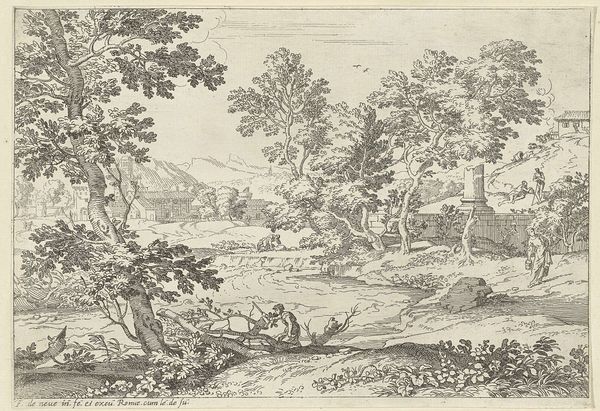
print, etching
#
baroque
#
dutch-golden-age
# print
#
etching
#
landscape
#
form
#
line
#
genre-painting
#
realism
Dimensions: height 226 mm, width 288 mm
Copyright: Rijks Museum: Open Domain
Editor: Here we have "Boer bij een kudde schapen," or "Farmer with a Flock of Sheep," by Anthonie Waterloo, made sometime between 1630 and 1676. It's an etching, currently at the Rijksmuseum. It's incredibly detailed, and there's a sort of quietness to the scene that I find really appealing. What's your take on this landscape? Curator: What strikes me is the contrast between the seemingly idyllic scene and the realities of 17th-century rural life. Waterloo presents us with a picturesque shepherd and his flock, but we must consider the socio-economic hierarchies embedded in such imagery. This was a period of increasing enclosure and land privatization, impacting peasant communities. Editor: So, it's not just a peaceful countryside scene, but also maybe a commentary on land ownership? Curator: Precisely. The etching's detailed depiction of the land prompts us to question who has access to it and who benefits from its resources. Consider also the visual weight given to the trees on the right. Editor: Yes, that's very striking! The density on the right and then a wide opening on the left… Curator: The artist directs our gaze—who do you think this division might be representing? Editor: Maybe it's nature, then human taming of nature and the tensions within? And the tiny figures in the distance highlight that divide even more? I hadn't really considered it that way before. Curator: The beauty of art lies in its ability to provoke these kinds of questions, urging us to consider the world around us. Editor: Absolutely, and seeing it framed within these broader historical and social contexts really changes how I understand the piece. Thank you.
Comments
No comments
Be the first to comment and join the conversation on the ultimate creative platform.
